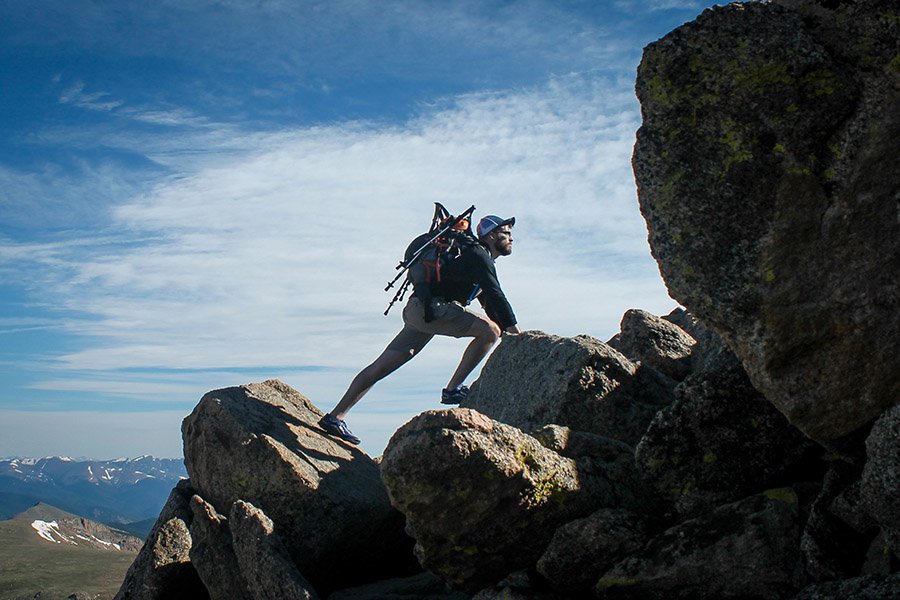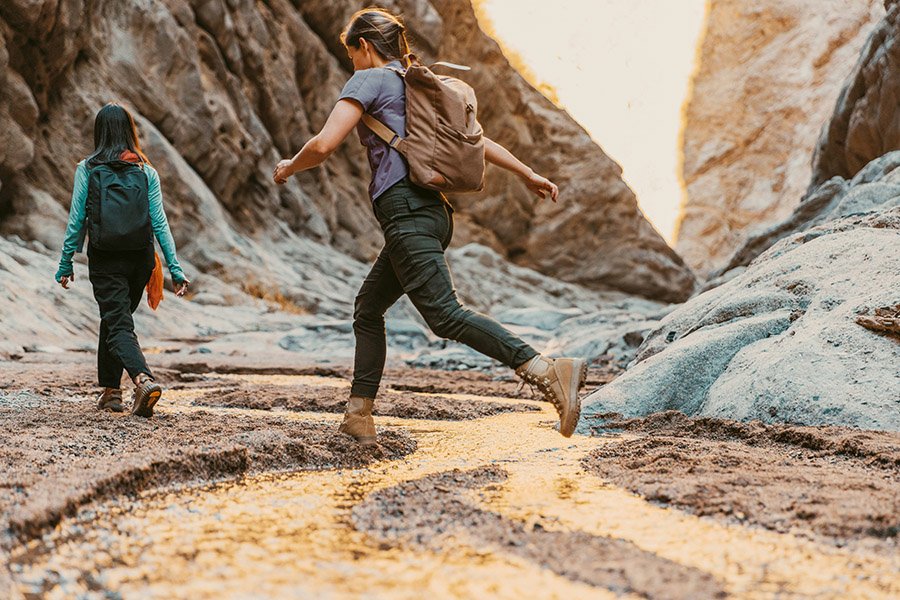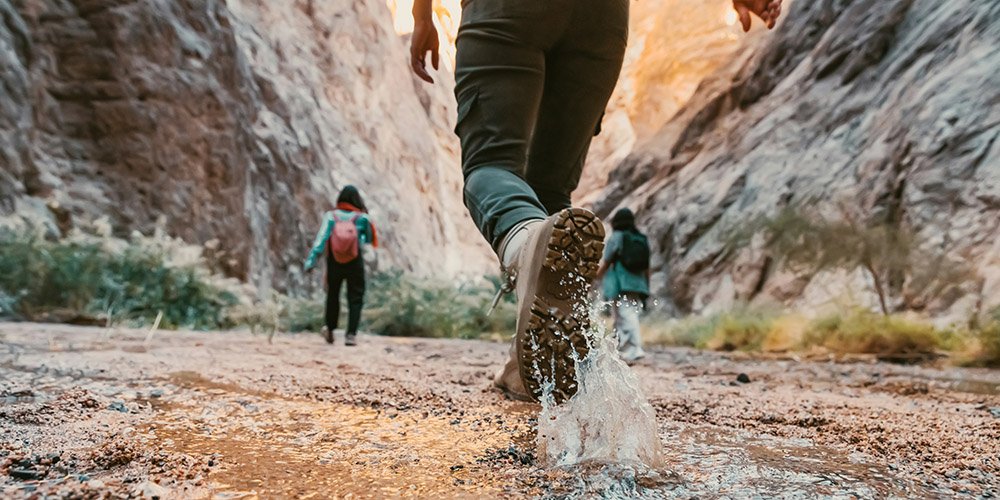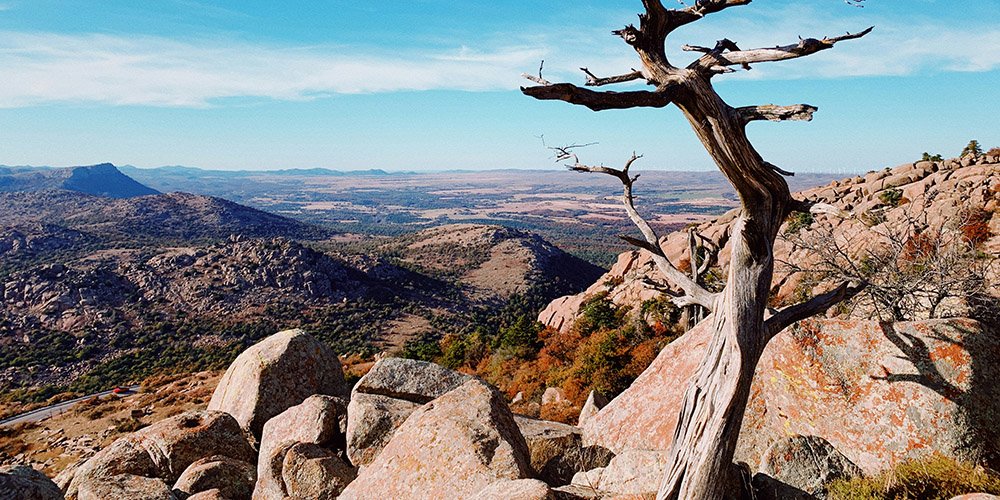Why Is Hiking Such a Complete Lower Body Workout? Find Out!
Hiking has long been celebrated not just as a recreational activity but as a powerhouse for physical fitness. While many people recognize the cardiovascular benefits of hiking, fewer might realize that it offers one of the most complete lower body workouts one can get.
From the calves to the glutes, hiking engages a myriad of muscles, enhancing strength, flexibility, and balance. Curious about how and why hiking is so effective? Read on to discover the comprehensive benefits this activity offers for your lower body.
Exploring Hiking’s Full-Body Benefits
Hiking is a multifaceted exercise that engages your entire body. The undulating terrain, varying elevations, and ever-changing environments ensure that no two hiking experiences are the same. This variability is a key factor in why hiking is such an effective full-body workout. It challenges not just your physical stamina but also your coordination and balance.
But when it comes to the lower body, hiking truly shines. Unlike static exercises you might do in a gym, hiking offers dynamic movement patterns that mimic real-life activities. This means that not only are you building muscle and burning calories, but you’re also improving functional strength—the kind that helps you perform everyday tasks more efficiently.
Moreover, the mental and emotional benefits of hiking can’t be understated. As you navigate through nature, the serene surroundings offer a mental break from the stresses of daily life. This holistic approach to fitness ensures that both your body and mind are rejuvenated after a hike.

The Anatomy of a Great Lower Body Workout
When we talk about a great lower body workout, we’re looking at exercises that target the major muscle groups: quadriceps, hamstrings, calves, and glutes. Effective workouts should also engage stabilizing muscles, including those in the hips and lower back. Compound movements that mimic natural body mechanics are particularly beneficial, as they improve both strength and coordination.
Hiking checks all these boxes and more. The natural inclines and declines you encounter on a hiking trail require your muscles to work in unison to propel you forward and maintain balance. This kind of engagement is difficult to replicate on gym machines, where movement is often linear and predictable.
Additionally, the uneven terrain of most hiking trails adds an extra layer of challenge. Your body must constantly adjust to changes in the surface, which activates stabilizing muscles that often get overlooked in traditional workouts. This makes hiking an incredibly efficient way to work multiple muscle groups simultaneously.
Hiking: More Than Just a Leisure Activity
While many view hiking primarily as a leisurely activity, its benefits go far beyond simply enjoying nature. Hiking is an excellent form of functional fitness, meaning it trains your muscles to work together to perform everyday activities. From climbing stairs to carrying groceries, the strength and coordination you develop while hiking translate seamlessly into daily life.
Hiking also offers a unique cardio element, combining aerobic and anaerobic exercise. The continuous movement up and down varied terrains ensures that your heart rate remains elevated, helping you burn calories and improve cardiovascular health. Unlike steady-state cardio exercises like jogging on a flat surface, hiking introduces intervals naturally, varying in intensity based on the trail’s difficulty.
Moreover, hiking can be customized to suit various fitness levels. Whether you’re tackling a steep mountain trail or enjoying a gentle walk through the woods, you can adjust the intensity to meet your specific fitness goals. This versatility makes hiking an inclusive activity that everyone—from beginners to seasoned athletes—can benefit from.
Muscles Worked While Hiking: A Breakdown
When you hike, your lower body does the lion’s share of the work. Let’s break down the specific muscles that are engaged during a hike. Starting with the quadriceps, these muscles at the front of your thighs are crucial for extending your knee and propelling you forward, especially on uphill climbs.
Next, the hamstrings, located at the back of your thighs, are vital for bending your knee and moving your leg backward. These muscles work in tandem with your quads to power each step. Your calves, made up of the gastrocnemius and soleus muscles, are constantly engaged as they help lift your heels off the ground and stabilize you on uneven surfaces.
Finally, we can’t forget the glutes, which are responsible for hip extension and play a significant role in stabilizing your pelvis. Strong glutes not only improve your hiking performance but also help prevent injuries. Combined, these muscles form a robust network that supports your every move on the trail, making hiking a full-spectrum lower body workout.
Also read: Are Crocs Good for Hiking? Discover the Surprising Truth!

How Elevation Gain Strengthens Your Legs
Elevation gain is one of the most challenging and rewarding aspects of hiking. When you ascend a hill or mountain, your legs have to work much harder to lift your body against gravity. This increased demand significantly engages your quadriceps, as they extend your knees with each step.
But it’s not just the uphill climbs that are beneficial. Descending a trail also provides a formidable workout. As you navigate downhill, your muscles must work eccentrically—lengthening under tension—to control your descent. This action heavily recruits your hamstrings and glutes, helping to build strength and endurance.
Moreover, the varied elevation inherently provides a form of natural interval training. As you shift from flat or gently sloping sections to steeper inclines, your heart rate fluctuates, offering both aerobic and anaerobic benefits. This variability not only makes your legs stronger but also helps improve your cardiovascular fitness in a way few other exercises can.
The Role of Terrain in Muscle Engagement
The type of terrain you encounter while hiking greatly influences which muscles are activated and how intensely they work. Uneven surfaces like rocks, roots, and loose gravel require your stabilizing muscles to stay engaged to maintain balance. This constant adjustment helps strengthen your ankles, knees, and hips, reducing the risk of injury.
Soft terrains like sand or mud add an extra layer of resistance, making each step more challenging. This increases the demand on your calves and glutes, working them harder than they would on a flat, hard surface. Similarly, hiking through snow or thick vegetation requires more effort to lift your feet, providing an excellent workout for your hip flexors and quadriceps.
Even flat sections of a trail offer unique advantages. Walking on a natural surface, as opposed to a treadmill or pavement, forces your muscles to adapt to subtle changes in the ground’s texture and slope. This kind of engagement is excellent for developing proprioception—your body’s ability to sense its position and movement in space—further enhancing your overall functional fitness.
Hiking vs. Traditional Leg Workouts: A Comparison
Traditional leg workouts often involve a series of isolated exercises, such as squats, lunges, and leg presses, performed in a controlled environment like a gym. While these exercises are effective for building muscle mass and strength, they don’t fully replicate the dynamic, functional nature of hiking.
Hiking, on the other hand, combines strength training with cardiovascular exercise, offering a more holistic approach to fitness. The uneven terrain and varying elevations provide a natural form of resistance training that engages multiple muscle groups simultaneously. This not only builds strength but also improves coordination, balance, and endurance.
Another key difference is the mental aspect. Hiking in nature offers a sense of adventure and exploration that you just can’t get from a gym workout. The changing scenery and fresh air can make the exercise feel less monotonous and more enjoyable, increasing the likelihood that you’ll stick with it long-term. This makes hiking a more sustainable and engaging way to achieve your fitness goals.

Enhancing Flexibility and Balance on Trails
One of the often-overlooked benefits of hiking is its ability to enhance flexibility and balance. As you navigate uneven terrains and obstacles like rocks, roots, and streams, your body must constantly adjust to maintain stability. This engages your core and lower body muscles in ways that traditional exercises often don’t, improving your overall balance.
The dynamic movements required for hiking also promote flexibility. Stretching to climb over obstacles or extending your legs to step up or down engages your muscles through a full range of motion. This active stretching helps improve muscle elasticity, making you more flexible over time.
Moreover, the proprioceptive demands of hiking—your body’s ability to sense its position and movement—are unparalleled. Each step requires a fine-tuned balance of coordination and strength, helping to enhance your body awareness. Over time, this leads to improved balance and a reduced risk of injuries, both on and off the trail.
The Mental and Emotional Perks of Hiking
The benefits of hiking go beyond physical fitness; it’s also a boon for mental and emotional well-being. The natural settings in which hiking takes place offer a peaceful retreat from the hustle and bustle of everyday life. The sights, sounds, and smells of nature have been shown to reduce stress and anxiety, offering a form of mental rejuvenation.
In addition to stress relief, hiking can also improve mood and mental clarity. Physical activity releases endorphins, the body’s natural feel-good chemicals, which can help alleviate symptoms of depression and anxiety. The rhythmic nature of walking also offers a meditative aspect, allowing your mind to wander and relax.
Lastly, hiking fosters a sense of accomplishment and boosts self-esteem. Reaching the summit of a challenging trail or completing a long hike gives you a tangible sense of achievement. This can translate into increased confidence and motivation in other areas of your life, making you feel more capable and resilient.
Tips for Maximizing Your Hiking Experience
To get the most out of your hiking experience, preparation is key. Start by choosing the right trail for your fitness level and gradually progress to more challenging hikes. Investing in quality gear like supportive hiking boots and moisture-wicking clothes can also make a big difference in your comfort and performance.
Staying hydrated and fueled is crucial, especially for longer hikes. Bring plenty of water and nutrient-dense snacks like nuts, dried fruit, and energy bars. Proper hydration and nutrition will help sustain your energy levels and improve your overall experience on the trail.
Lastly, don’t forget to listen to your body. While it’s important to challenge yourself, pushing too hard can lead to injuries. Take breaks as needed, and use them as an opportunity to enjoy the scenery. By pacing yourself and paying attention to your body’s signals, you can make hiking a safe, enjoyable, and highly beneficial activity.
Final Thoughts
Hiking stands out as one of the most effective and enjoyable ways to achieve a comprehensive lower body workout. From building muscle strength to enhancing flexibility and balance, the benefits are wide-ranging and impactful. Plus, the mental and emotional perks make hiking a holistic exercise that nourishes both body and mind. So, lace up your hiking boots and hit the trails. The journey to a fitter, happier you awaits!






